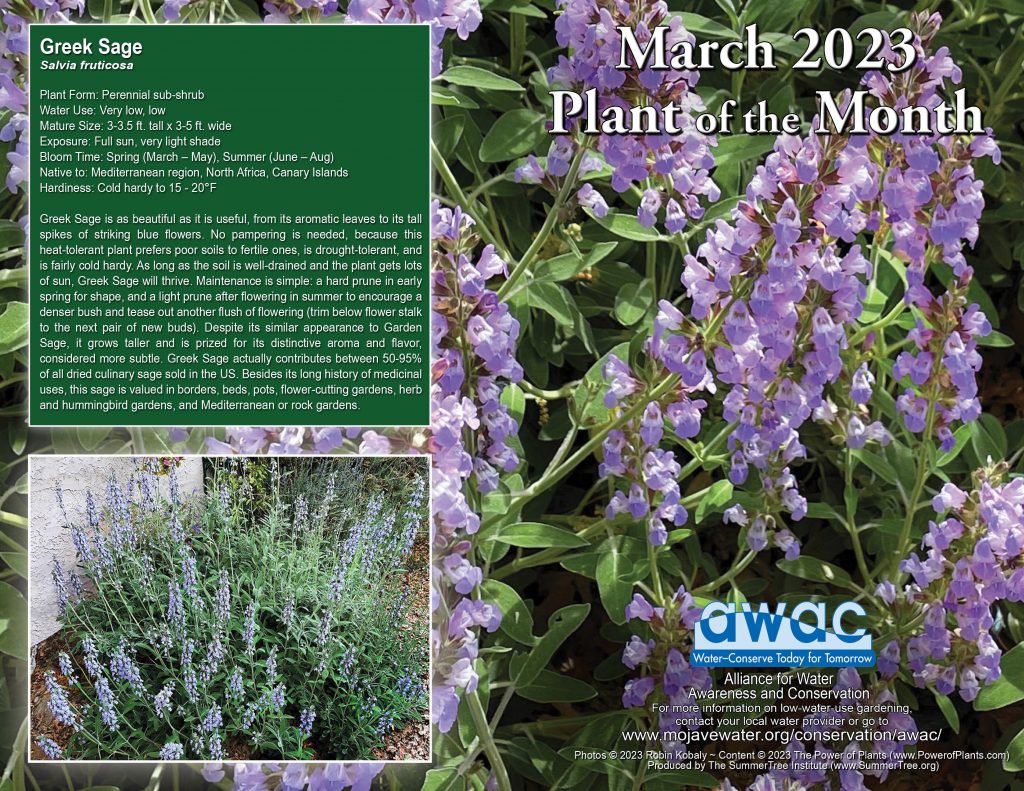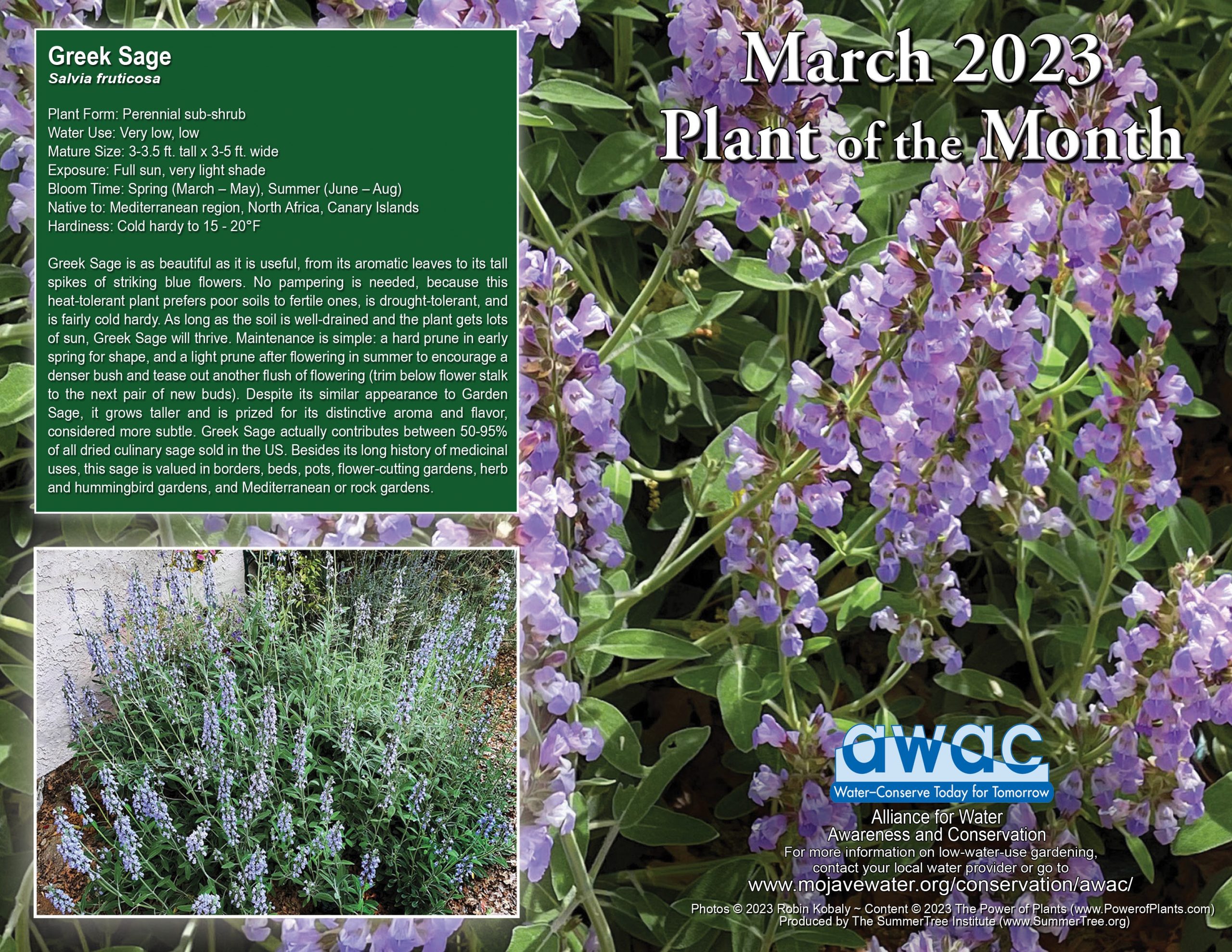Greek Sage is as beautiful as it is useful, from its aromatic leaves to its tall spikes of striking blue flowers. No pampering is needed, because this heat-tolerant plant prefers poor soils to fertile ones, is drought-tolerant, and is fairly cold hardy. As long as the soil is well-drained and the plant gets lots of sun, Greek Sage will thrive. Maintenance is simple: a hard prune in early spring for shape, and a light prune after flowering in summer to encourage a denser bush and tease out another flush of flowering (trim below flower stalk to the next pair of new buds). Despite its similar appearance to Garden Sage, it grows taller and is prized for its distinctive aroma and flavor, considered more subtle. Greek Sage actually contributes between 50-95% of all dried culinary sage sold in the US. Besides its long history of medicinal uses, this sage is valued in borders, beds, pots, flower-cutting gardens, herb and hummingbird gardens, and Mediterranean or rock gardens.

